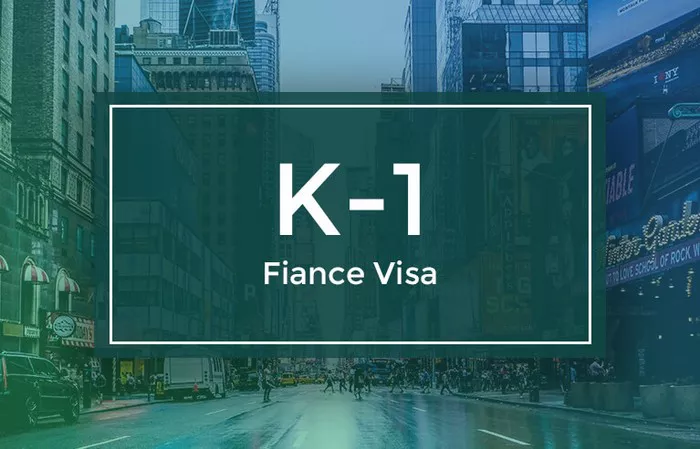In an era marked by globalization and cross-cultural relationships, the process of obtaining a K-1 visa has become increasingly common. This visa, designed for fiancé(e)s of United States citizens, allows individuals to enter the U.S. for the purpose of getting married. However, behind the veil of romance lies a complex and challenging process. From extensive paperwork to stringent requirements, the journey to obtain a K-1 visa is fraught with hurdles that test the resolve of even the most determined couples.
Understanding the K-1 Visa
The K-1 visa, often referred to as the “fiancé visa,” is a nonimmigrant visa issued to the foreign fiancé(e)s of U.S. citizens. Its primary purpose is to allow the foreign partner to enter the United States legally for the purpose of marrying their U.S. citizen sponsor within 90 days of arrival. Once married, the foreign spouse can apply for adjustment of status to become a lawful permanent resident (green card holder).
The Complexity of the Process
Obtaining a K-1 visa involves navigating a labyrinth of paperwork, interviews, and stringent requirements. The process begins with the U.S. citizen sponsor filing a petition on behalf of their foreign fiancé(e) with United States Citizenship and Immigration Services (USCIS). This petition, known as Form I-129F, requires detailed information about both parties, evidence of the relationship, and proof of eligibility.
After USCIS approves the petition, it is forwarded to the National Visa Center (NVC) for further processing. The foreign fiancé(e) must then complete a series of steps, including submitting additional documentation, undergoing a medical examination, and attending an interview at the U.S. embassy or consulate in their home country.
Challenges Along the Way
Despite its romantic connotations, the journey to obtain a K-1 visa is far from smooth sailing. One of the biggest challenges couples face is meeting the stringent eligibility requirements imposed by U.S. immigration law. These requirements include proving a bona fide relationship, demonstrating financial ability to support the foreign fiancé(e), and ensuring both parties are legally free to marry.
Proving the bona fide nature of the relationship can be particularly challenging, especially for couples who have not been together for an extended period or have limited documentary evidence of their relationship. USCIS scrutinizes every aspect of the relationship, from communication records to joint financial assets, in an attempt to weed out fraudulent marriages entered into solely for immigration purposes.
Financial requirements also pose a significant hurdle for many couples. The U.S. citizen sponsor must demonstrate an income that is at least 100% of the Federal Poverty Guidelines to prove they can financially support their foreign fiancé(e) upon their arrival in the United States. For couples who do not meet this threshold, alternative options such as obtaining a joint sponsor may be necessary, adding another layer of complexity to the process.
Navigating the Interview
One of the most critical stages of the K-1 visa process is the interview at the U.S. embassy or consulate. During this interview, a consular officer assesses the genuineness of the relationship and the eligibility of the foreign fiancé(e) to receive a K-1 visa. The officer may ask probing questions about the couple’s history, future plans, and knowledge of each other to ensure they are indeed in a bona fide relationship.
The interview can be a nerve-wracking experience for couples, as the fate of their visa application hangs in the balance. Preparation is key, and couples are often advised to review their petition thoroughly, gather additional evidence of their relationship, and practice answering potential interview questions.
Delays and Uncertainties
The K-1 visa process is notorious for its lengthy processing times and unpredictable delays. While USCIS provides estimated processing times for Form I-129F, these timelines are often exceeded due to backlogs, staffing shortages, and other bureaucratic hurdles. As a result, couples may find themselves waiting months, or even years, for a decision on their visa application, putting a strain on their relationship and testing their patience.
Furthermore, external factors such as changes in immigration policies or geopolitical tensions can exacerbate delays and introduce additional uncertainties into the process. In recent years, fluctuations in visa processing times and increased scrutiny of visa applications have added to the challenges faced by couples seeking a K-1 visa.
Conclusion
The journey to obtain a K-1 visa is undeniably challenging, requiring couples to navigate a maze of paperwork, interviews, and stringent requirements. From proving the bona fide nature of their relationship to meeting financial thresholds, every step of the process presents its own set of hurdles and uncertainties.
Despite the challenges, many couples persevere in their quest to be together, driven by love and a shared vision of building a life in the United States. For those who successfully navigate the complexities of the K-1 visa process, the reward is not just a visa stamp in their passport but the opportunity to begin a new chapter of their lives together, united in marriage and bound by love.


